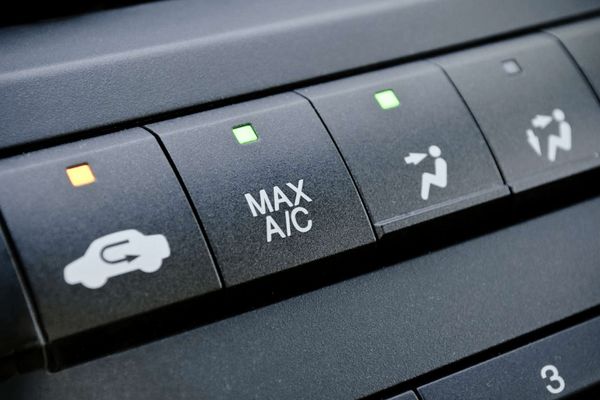Have you ever wondered what that recirculate button on your car’s AC control panel is for? Well, it turns out that this little button plays a big role in keeping you and your car comfortable and healthy. Let’s take a closer look at what the air recirculation button does and why it’s important to use it properly.

The Air Recirculation Button: A Breath of Fresh Air
In the world of automotive controls, the air recirculation button serves as a guardian of the air quality inside your car. This button, often represented by a symbol of a car with a curved arrow, circulates the air that’s already inside your vehicle instead of constantly bringing in outside air. When you activate this button, the air conditioning system cools down the pre-chilled interior air instead of continuously cooling incoming hot air[^1^].
So, what’s the benefit of using the air recirculation mode? Well, besides maintaining a comfortable temperature, it actually helps improve fuel efficiency. When the air conditioning is on and the recirculation mode is activated, the system can cool the air faster and with less effort, which means better fuel efficiency for your vehicle. Plus, this mode acts as a barrier against outdoor pollutants, exhaust fumes, and allergens, creating a cleaner and healthier environment for you and your passengers[^1^].
Benefits Beyond Comfort
But the air recirculation button doesn’t just enhance comfort; it’s also a smart tool that contributes to a more efficient and enjoyable driving experience.
Improved Fuel Efficiency
According to The Wall Street Journal[^2^], using the air recirculation mode can actually help improve your vehicle’s fuel efficiency. By recirculating the already cooled interior air, your car’s air conditioning system requires less energy compared to continuously cooling down hot external air. Not only does this conserve fuel, but it also puts less strain on the air conditioning system, potentially extending its lifespan.
Cleaner Air, Healthier Environment
Air quality is a major concern, especially in busy urban areas filled with pollution. By using the air recirculation mode, you can significantly reduce your exposure to external contaminants, making your cabin environment safer and more comfortable. This mode acts as a shield against pollutants and allergens, giving you cleaner air to breathe during your journey.
Quieter Ride, Reduced Stress
The benefits of the air recirculation mode go beyond air quality. By recirculating the interior air, it can help minimize the noise from the busy streets, resulting in a quieter ride. Additionally, by reducing the workload on the air conditioning system, your vehicle’s components are subjected to less stress, potentially leading to fewer maintenance requirements and longer-lasting performance.
When and When Not to Use the Recirculation Button
Knowing when to use the air recirculation mode can help optimize your driving experience and ensure the well-being of your passengers.
Hot Weather
During hot weather, especially in the midst of a scorching heatwave, engaging the air recirculation mode can help the air conditioning system cool down your cabin more efficiently. It provides a quicker escape from the sweltering temperatures outside, allowing you to stay cool and comfortable during your drive.
Polluted Areas
In areas with high pollution levels, such as heavy traffic or industrial zones, activating the recirculation mode acts as a shield, protecting your cabin from harmful exhaust fumes and pollutants. This is especially important for the health and well-being of you and your passengers.
Odor Control
Ever come across a pungent odor from a nearby landfill or factory? By using the air recirculation mode, you can prevent these unpleasant smells from infiltrating your cabin, ensuring a more pleasant journey.
However, there are situations where using the air recirculation mode might not be advisable.
Winter Driving
During cold weather, excessive use of the recirculation mode can lead to foggy windows due to trapped moisture. To maintain clear visibility, it’s better to allow fresh air to circulate, aiding in faster defogging.
Long Duration Usage
Using the recirculation mode for extended periods in sealed vehicles can increase carbon dioxide levels. To maintain a healthy cabin environment, it’s recommended to periodically switch to fresh air mode, especially during long drives.
Respiratory Concerns
If you or your passengers suffer from respiratory issues or allergies, using the fresh air mode may be more suitable to minimize the recirculation of potentially stale or polluted air[^3^].
In conclusion, the air recirculation button in your car plays an important role in keeping you comfortable and healthy. By understanding how and when to use this feature, you can enjoy improved fuel efficiency, cleaner air, a quieter ride, and reduced maintenance requirements. So, the next time you get into your car, don’t forget to make the most of this often overlooked button. Happy driving!






